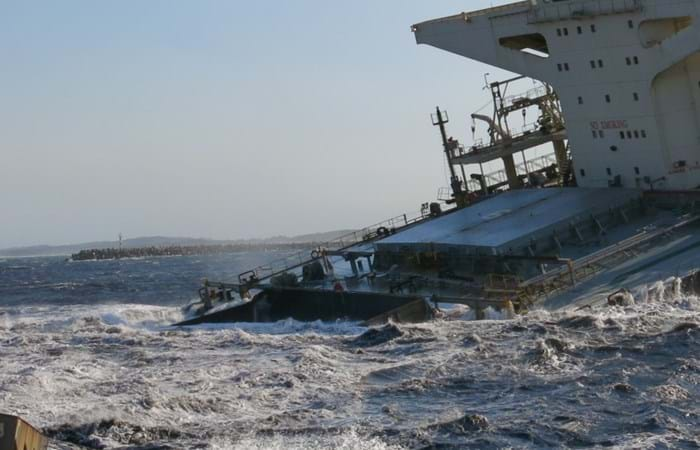During heavy swells on the morning of the 19th of August the bulk carrier 'Smart', 150,000 DWT loaded with 147,000 tons of coal, left the port of Richards Bay, South Africa heading for China. Soon, however, the swell became too much and the vessel grounded next to the channel, less than 250 m from the coast. Just hours after the grounding, the vessel broke in two.
SMIT Salvage and one of its local partners were contracted for the immediate removal of the bunker oil and other pollutants on board plus the removal of the aft section. Within just a day a large, 24-hour operation was set up including a Salvage team and various equipment from both warehouses in Cape Town and the Netherlands.
The continuous swell and rough weather at the casualty location made it a very challenging task for the salvage crew to work on and around the vessel throughout the entire operation. By making use of SMIT’s hot taps, pumps and hoses, all 1,900 tons of the heavy fuel oil was pumped into local barges and safely brought ashore without causing any oil pollution. Other pollutants were safely removed from the vessel as well.
SMIT’s naval architects calculated that most of the cargo that was still in holds 8 and 9 had to be discharged to refloat the aft section. This was done with specialized dredging pumps operated from a chartered DP vessel. In addition, a specially designed steel structure was placed and welded onto the casualties deck for a mobile crane to facilitate access to the cargo mid-ships. This crane operated similar pumps and discharged the remaining coal.
In parallel salvage tug ‘Smit Amandla’ was mobilized from Cape Town and connected to the ‘Smart’ with the Dyneema pulling rope. Due to the seven-week salvage operation, when the aft part of the vessel was stuck in the sand and mud all the time, it took several attempts for the ‘Smit Amandla’ to pull her off. After the successful refloating this part of the vessel was taken to open ocean - again in heavy swells - and was eventually scuttled at a designated location, 28 Nm off Richards Bay.

